Faculty and Researchers
Science
An introduction to faculty staff members and laboratories in the Science.
Note: Information on the laboratories is current as of the 2025 academic year. There may be changes to this information in the 2026 academic year.
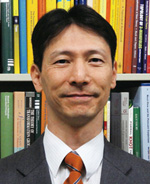
IKEDA Toru
- Position
- Professor
- Laboratory
- Manifold Laboratory
Topology, 3D Manifolds, Knot Theory
A 3-manifold is a space in which a 3D coordinate system can be drawn around arbitrary points. Although it’s difficult to visualize an entire 3-manifold, work here involves cutting and pasting spaces and curves in order to study geometric properties such as symmetry.
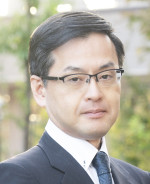
INOUE TARO Kaiki
- Position
- Professor
- Laboratory
- Laboratory for Cosmology
Cosmology, Astrophysics, Galactic Astronomy
In Inoue Laboratory, we study various phenomena on cosmological scales using theoretical and observational methods, in order to elucidate unknown physical laws and mechanisms in the Universe. In particular, we focus on the bending of light paths due to general relativistic effects (gravitational lensing) and changes in light energy (gravitational redshift), and verify the consistency of cosmological models through synergy between theory and observations. In recent years, we have been focusing on observational studies with the ALMA and Subaru telescopes, including verification of dark matter models, galaxy evolution in extremely large-scale low-density regions, deep learning for detecting astronomical objects, and the effect of active galactic nuclei (AGN) on galaxy formation.
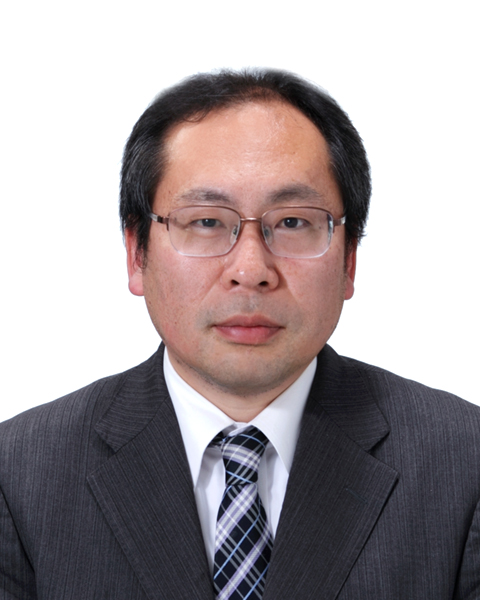
OKUBO Takashi
- Position
- Professor
- Laboratory
- Opto-Electronic Functional Chemistry Laboratory
Coordination Chemistry, Physical Chemistry, Organic Opto-Electronic Devices
A variety of functional materials are used in electronic products such as televisions, computers, and cell phones, and recently, electronic products using organic materials such as organic EL televisions are becoming more familiar. In our laboratory, we are focusing on metal complexes, and are developing new metal complexes that can be applied to electronic devices, such as thin-film solar cells, field-effect transistors (FETs), and organic light emitting diodes (OLEDs). We are also developing new metal complexes in order to apply them to electronic devices. We are also conducting research to improve the efficiency of organic thin-film solar cells.
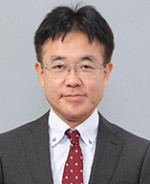
ODA Fumihito
- Position
- Professor
- Laboratory
- Group Theory Laboratory
Representation Theory of Finite Groups
Examination is carried out into finite groups and their representation using a category theory approach. Research is conducted into group actions on simplicial complexes, semi-ordered sets, and modules.
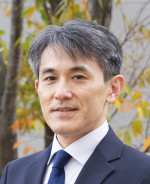
KAGAWA Nao
- Position
- Professor
- Laboratory
- Laboratory of Behavioral Genetics
Fish Physiology, Behavioral Neuroendocrinology
How are social behaviors regulated in animals? Focusing on genes expressed in the brain, we are investigating the mechanisms that control social behaviors and emotional responses using fish as a model.
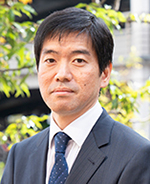
KASAMATSU Kenichi
- Position
- Professor
- Laboratory
- Laboratory of Theoretical Condensed Matter Physics
Theory of Condensed Matter Physics
A Bose gas of neutral atoms cooled down to near absolute zero temperature causes a phase transition called Bose-Einstein condensation, resulting in quantum condensates possessing strange properties, as exemplified by superfluidity. We investigate various phenomena exhibited by atomic Bose-Einstein condensates.
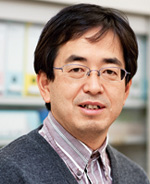
KATO Yukihiro
- Position
- Professor
- Laboratory
- Experimental Particle Physics Laboratory
Experimental Particle Physics
We know that matter is composed of things like quarks and other subatomic particles. But what are subatomic particles composed of? Using a large particle accelerator, research here tries to answer questions like this.
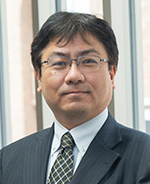
KAMIYAMA Tadashi
- Position
- Professor
- Laboratory
- Physical Chemistry Laboratory
Biophysical Chemistry, Solution Chemistry
Research on elucidating the so-called “blueprint” and “operating manual” of proteins by understanding the nature of proteins under a variety of conditions (temperature, pressure, solvents, additives, etc.).
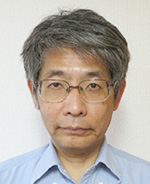
KONDO Yasushi
- Position
- Professor
- Laboratory
- Quantum Control Laboratory
Quantum Information, Condensed Matter Physics
Research is carried out with an interest in a wide range of control methods, in which quantum mechanics such as quantum information and quantum control play an important role. In particular, if quantum computers are realized, it will change the world. It is hoped that the elemental research conducted here will help make such computers a reality.
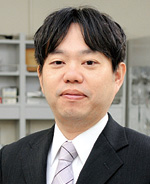
SAGA Yoshitaka
- Position
- Professor
- Laboratory
- Biological Chemistry Laboratory
Photobiological Chemistry
We focus on the mechanisms of photobiological reactions, such as photosynthesis, at the molecular level. In addition, we develop photofunctional nanomaterials that will contribute to solve energy and environmental issues.
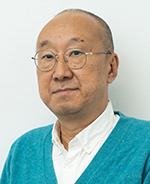
SAKUMA Kazuhiro
- Position
- Professor
- Laboratory
- Topology Laboratory
Topology
I am studying 4D manifolds and the higher dimensional manifolds by using singularity theory of differentiable maps. There appears singular points in general which degenerate for the differential of smooth maps, so we try to observe the method of eliminating singularities with higer coranks.
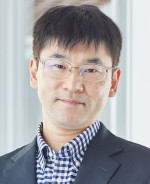
SUGIMOTO Kunihisa
- Position
- Professor
- Laboratory
- Inorganic Chemistry Laboratory
Inorganic Chemistry, X-ray Crystallography, Synchrotron Radiation Science
In inorganic chemistry, a wide variety of atoms are involved, allowing for the pursuit of infinite possibilities in material structure design. Our research focuses on synthesizing novel inorganic compounds with beneficial functionalities and elucidating their fundamental properties using cutting-edge measurement and analytical techniques.
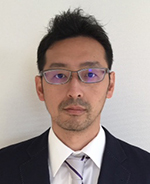
DANSHITA Ippei
- Position
- Professor
- Laboratory
- Quantum Many-Body Physics Laboratory
Theory of condensed matter physics, Theory of atomic, molecular, and optical physics, Theory of quantum control
In condensed matter systems, such as electrons in solids and liquid helium, competitions and/or collaborations of quantum nature and interparticle interactions lead to various interesting phenomena, including superfluidity, superconductivity, quantum phase transitions, and many-body localization. We develop theoretical methods describing quantum many-body systems, aiming to discover novel quantum many-body effects.
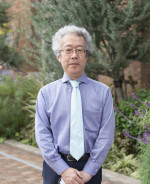
CHINEN Koji
- Position
- Professor
- Laboratory
- Applicable Algebra Laboratory
Analytic Number Theory, Coding Theory
Coding theory is about ways to properly relay information. It is a comprehensive theory that is the result of numerous mathematical developments. Research is conducted with a focus on algebra, including coding theory as a mathematical theory and related group theory, and ring theory. Research is also conducted into analytic number theory as it relates to ciphers.
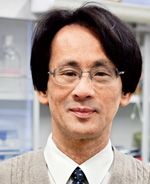
TSUJIUCHI Toshifumi
- Position
- Professor
- Laboratory
- Molecular Oncology Laboratory
Molecular Oncology, Diagnostic Pathology, Experimental Pathology
Cancer progresses in stages: as genetic abnormalities accumulate, it progresses from precancerous lesions to cancer. In addition to searching for genetic mutations of unfavorable prognoses, refractory cancer, such as in pancreatic cancer, lung cancer, and bone cancer, research includes cell function analysis through the creation of cancer cells to knock down target genes. The goal is to shed light on molecular mechanisms in cancer infiltration and metastases, and in the acquisition of resistance to anti-cancer drugs.
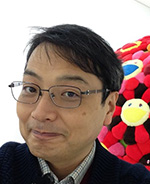
DOTERA Tomonari
- Position
- Professor
- Laboratory
- Soft Matter Physics Laboratory
Quasicrystal Physics, Soft Matter Physics, Condensed Matter Physics
This laboratory is the world leader in soft quasicrystal research. This laboratory made the world’s first discovery of a polymeric quasicrystal, implying that even soft matter has an ordered structure with no repetitive units. Theoretical research on the origin of the formation of soft quasicrystals appeared in Nature. Recently Dr. Dotera found the bronze-mean quasicrystal. Also, he aims to develop the science of gyroid.
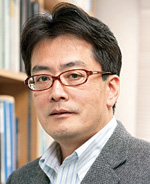
NAKAGUCHI Yuzuru
- Position
- Professor
- Laboratory
- Geochemical Laboratory
Oceangeochemistry
A wide variety of substances are present on Earth, and among them are elements essential to living organisms. We elucidate the circulation mechanism for these elements on Earth.
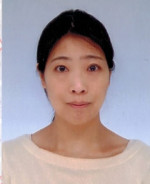
NAKAMURA Yayoi
- Position
- Professor
- Laboratory
- Computational Algebraic Analysis Laboratory
Analytic Number Theory、Computational Algebraic Analysis
By the usage of residues, multiple polylogarithms and multiple zeta values are studied.
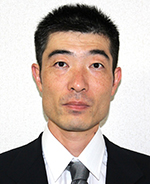
NISHIYAMA Masayoshi
- Position
- Professor
- Laboratory
- Laboratory for Dynamic Living Systems
Biophysics, Bioimaging
Biomolecules are nanometer-sized molecular machines working in living cells. Our research goal is to elucidate the operating principle how biological molecular machines work efficiently in collaboration with water molecules.
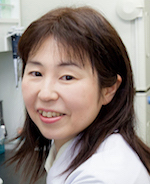
HAYASAKA Haruko
- Position
- Professor
- Laboratory
- Immune Molecular Function Laboratory
Molecular Biology, Cell Biology, Immunology
Immune cells act to protect us from disease-causing agents by attacking them. Cancer cells move from the primary lesion to other organs and proliferate. Research is conducted on the mechanisms of how cells move around inside the body and work in a specific location.
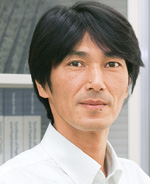
HIDAKA Yuji
- Position
- Professor
- Laboratory
- Bioengineering Laboratory
Peptide and Protein Folding, Physiological Activity, Molecular Evolution, Genetic Engineering, Peptide and Protein Science, Disulfide Binding
The conformational changes of the native proteins cause several diseases, such as Alzheimer's disease. Disulfide bonds play a critical role in the maintenance of the native (bioactive) conformation of peptides and proteins under thermodynamic or kinetic control. Therefore, it is important to regulate disulfide bond formation in protein folding. We currently focus on the development the chemical methods to regulate disulfide-coupled peptide and protein folding
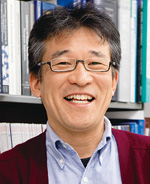
FUKUSHIMA Nobuyuki
- Position
- Professor
- Laboratory
- Molecular Neurobiology Laboratory
Cell Biology, Neurobiology, Lipid Biology
How is the complex neural circuitry of the brain created, what affects the actions of animals, and what mechanisms do nerves and cancer share? The mysteries behind these questions are delved into using research drawing on molecular biology.
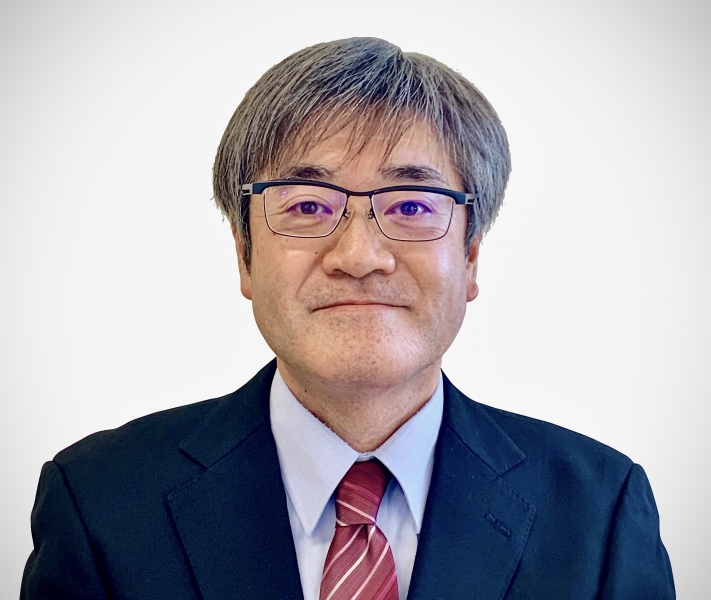
MAEKAWA Masahiko
- Position
- Professor
- Laboratory
- Organometallic chemistry laboratory
Coordination Chemistry, Organometallic Chemistry
We study about the syntheses, structures and functions of metal complexes and coordination polymers with gaseous small molecules (olefins, carbonyls, hydrides, etc.).
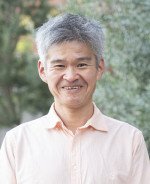
MAKI Teruya
- Position
- Professor
- Laboratory
- Environmental Microbiology Lab.
Environmental Microbiology, Bioaerosols, Airborne microorganisms, Public health, Climate change
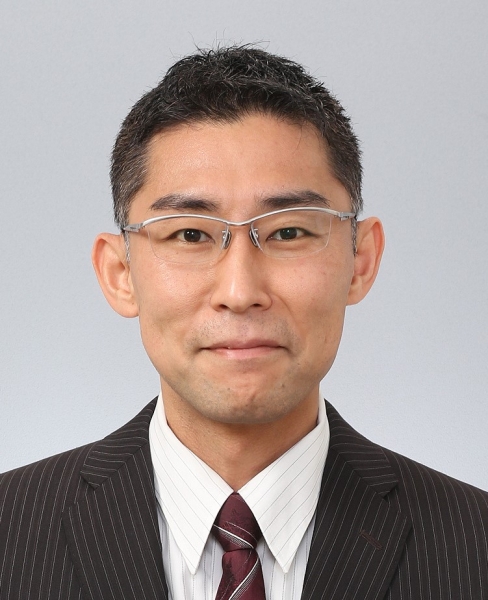
MATSUI Yutaka
- Position
- Professor
- Laboratory
- Microlocal Analysis Laboratory
Mathematics, Algebraic Analysis, Microlocal Analysis
The field of specialty here is algebraic analysis, which grew out of research into differential equations. Using combinatorics and microlocal analysis, research is conducted into reversion formulas of radon transforms of constructible functions, and the behavior of images.
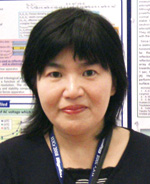
YANO Yohko
- Position
- Professor
- Laboratory
- Biophysics Laboratory
Biophysics, Chemical Physics, Structural Chemistry
Protein comes in various complex structures in the body in order to perform its functions. On the other hand, it easily changes form and loses its functions. These structural changes are observed using the world’s brightest X-rays in order to understand the mechanisms behind the formation of protein structures.
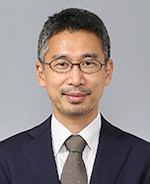
YAMASHITA Tomoki
- Position
- Professor
- Laboratory
- Discrete Mathematics Laboratory
Graph Theory
Most discrete structures can be expressed in graph form. Graph theory represents a major research field of discrete mathematics. Here, research is conducted into extremal graph theory, which is the relationship between invariants and local substructures of the graph.
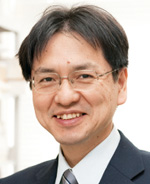
WAKABAYASHI Tomonari
- Position
- Professor
- Laboratory
- Molecular Physics and Quantum Chemistry
Physical Chemistry and Chemistry of Nanostructures
Laser ablated polyenes and fullerenes are studied by molecular spectroscopy and quantum chemistry. With experimental and theoretical knowledges on stability and structures of carbon molecules, microscopic views of high-temperature molecular processes are discussed.
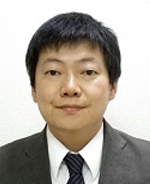
IHARA Kentarou
- Position
- Associate Professor
Number Theory
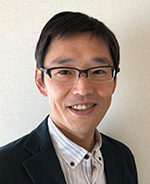
OMURA Yuji
- Position
- Associate Professor
- Laboratory
- Theoretical Particle Physics Laboratory
Theoretical Particle Physics
We study a lot of new physics possibilities motivated by mysteries in our universe and discuss which models are realistic to explain the latest experimental results. We explore for unknown physics beyond the Standard Model of elementary particle.
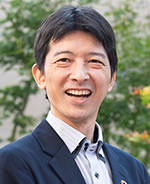
KAWASHITA Norihito
- Position
- Associate Professor
- Laboratory
- Computational Life Science
Computational Chemistry, Bioinformatics, Machine Learning, Protein-protein interaction, Infections, Molecular Design, Drug Resistance, Molecular Evolution
We aim to elucidate various phenomena in the life sciences, including molecular evolution, drug susceptibility, and protein-protein interactions, using computational chemistry and bioinformatics that utilize computers and supercomputer.
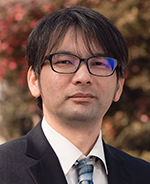
KURAMOCHI Yusuke
- Position
- Associate Professor
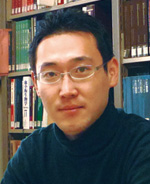
SHIMAMOTO Shigeru
- Position
- Associate Professor
- Laboratory
- Molecular Function and Structure Regulation Laboratory
Structural Biology, Thermodynamics
The function of proteins depends on its native tertiary structure. In order to clarify their function mechanism and regulate their function, we perform the structure determination of proteins and thermodynamic analysis.
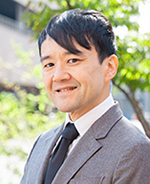
SUZUKI Takao
- Position
- Associate Professor
- Laboratory
- Special Functions Laboratory
Special functions and Integrable systems
My research field is the theory of special functions which are defined by differential or difference equations in complex domains. These special functions are related to various fields of pure mathematics and applied mathematics. Therefore they are very interesting research object.
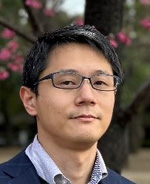
SUZUKI Hal
- Position
- Associate Professor
- Laboratory
- Laboratory of condensed matter physical chemistry
Condensed Matter Physical Chemistry, Thermodynamics
Thermodynamics and dynamics of various molecular condensed materials are investigated by calorimetry and rheometry, in order to reveal their physical characters in the aggregate.
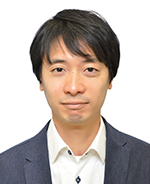
TASAKA Koji
- Position
- Associate Professor
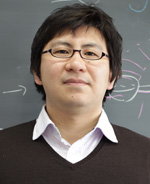
In Dae JONG
- Position
- Associate Professor
- Laboratory
- Knot Theory Laboratory
Knot Theory
Research is conducted into knot theory and low-dimension topology (3D and 4D). To investigate knots mathematically, often the invariants of knots are used. Research takes an interest in the relation between the algebraic properties of invariants and the geometrical properties of knots.
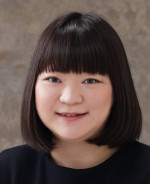
NOBUKAWA Kumiko
- Position
- Associate Professor
- Laboratory
- High-energy Astrophysics Lab.
High-energy Astrophysics
X-ray observations have revealed that the universe is hot and energetic. My research focuses on high-energy phenomena occurring in our galaxy. To further promote observational study, I have developed the CCD detector onboard the XRISM satellite. As the Principal Investigator of the SUIM project, I am also developing the X-ray camera dedicated to atmospheric observations, which will be installed on the exposed area of the International Space Station.
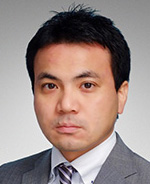
HYODO Kengo
- Position
- Associate Professor
- Laboratory
- Laboratory of Organic Reaction
Organic Chemistry, Catalytic Reaction
We are exploring useful and novel organic reactions for medicinal and process chemistry, which is not only environmentally benign but also safe for chemists and engineer. To realize the research purpose, we study the creation of new reagents and catalysts to enable their reactions and reveal the reaction mechanism.
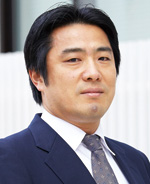
MASUI Takahiko
- Position
- Associate Professor
- Laboratory
- Solid State Physics Laboratory
Condensed Matter Physics (experiments)
In the field of condensed matter physics, it’s possible to conduct research by creating one’s own specimens and measuring these. It is interesting in a completely different way than mega science. The goal here is to discover new physical phenomena and new matter, as well as solve long-debated mysteries of science.
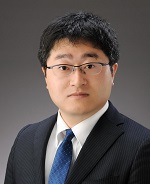
MATSUMOTO Kouichi
- Position
- Associate Professor
- Laboratory
- Organic Synthetic Chemistry Laboratory
Organic Synthetic Chemistry, Development of New Organic Reactions
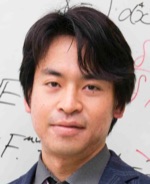
MISUMI Tatsuhiro
- Position
- Associate Professor
- Laboratory
- Quantum Field Theory Lab.
Theoretical Physics, Quantum Field Theory, Elementary Particle Physics
The most elementary objects in nature, called "elementary particles", are described by the theory named as "quantum field theory". In quantum field theory, the existence of particles is itself uncertain and the particles can emerge from the vacuum and can disappear too. In our Lab., we investigate the ways of analyzing quantum field theory and apply them to realistic phenomena in order to obtain deeper understanding of the nature.
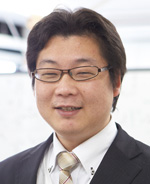
MORISAWA Yusuke
- Position
- Associate Professor
- Laboratory
- Applied Spectrsocopy Laboratory
Physical Chemistry, Molecular Science, Spectroscopic Analysis, Molecular Spectroscopy
Researching photo-physics based on fundamental spectroscopy research. Also developing analytical methods by observing spectra to extract information such as the attributes and amounts of a substance based on the interaction of the substance with light.
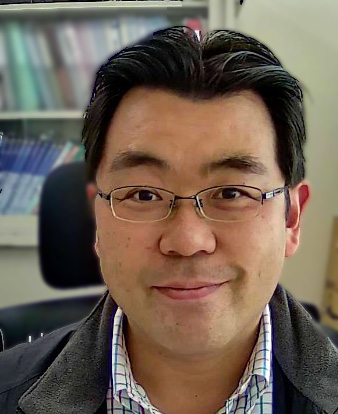
MORIYAMA Ryutaro
- Position
- Associate Professor
- Laboratory
- Laboratory of Environmental Physiology
Reproductive Biology, Physiology, Neuroendocrinology
Organisms have adopted characteristics suitable to their habitat so that they can survive individually and so that their species can carry on. Research is conducted into the mechanisms of how factors such as changes in nutritional conditions and internal and external stress control reproductive functions.
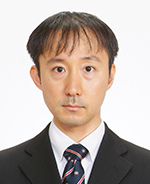
ARIYASU Shinya
- Position
- Lecturer
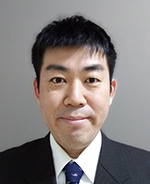
IIDA Kei
- Position
- Lecturer
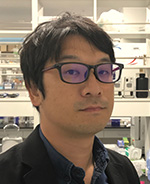
KISHITA Yoshihito
- Position
- Lecturer
- Laboratory
- Genome Sciences Lab.
Molecular biology, Human genetics, Genome analysis, Mitochondria
Human genome is the master blueprint of the human body. We investigate how gene mutations cause diseases. It aims at the elucidation of disease pathology and the development of drug discovery research using genome analysis and genome editing technology.

KOUNO Nanase
- Position
- Lecturer

KOMADA Munekazu
- Position
- Lecturer
- Laboratory
- Mammalian Embryology
Anatomy, Developmental Neurotoxicology, Congenital Anomaly, Mammalian Embryology
I would like to clarify the influence of maternal environment during pregnancy on the development and development of children. In addition, I aim to prevent birth defects and contribute to the healthy growth of children. I would like to engage in the development of human resources who wish for the birth and growth of children who will lead the next generation.

TAKEIRI Fumitaka
- Position
- Lecturer

NAKAMA Mina
- Position
- Lecturer

KOMORI Daichi
- Position
- Assistant Professor

SAIGOH Kazumasa
- Position
- Clinical Professor